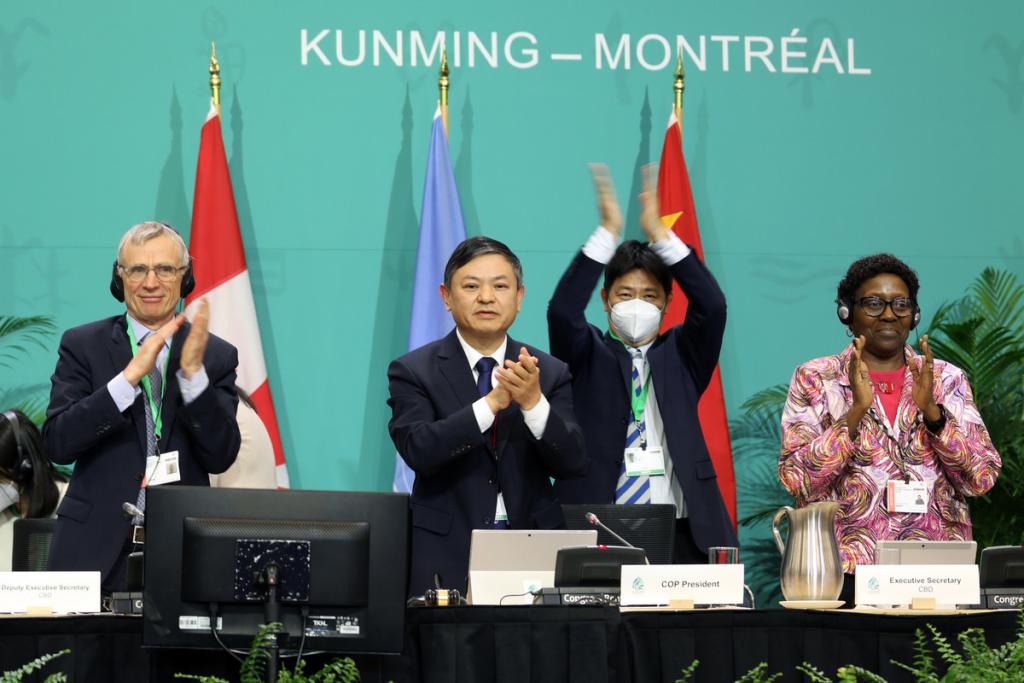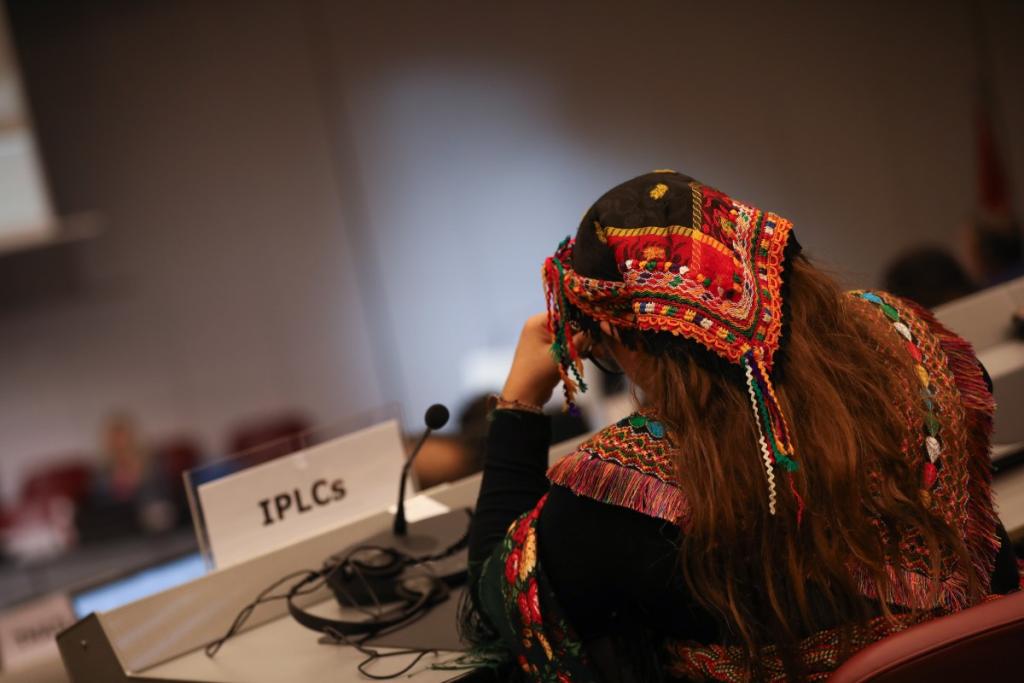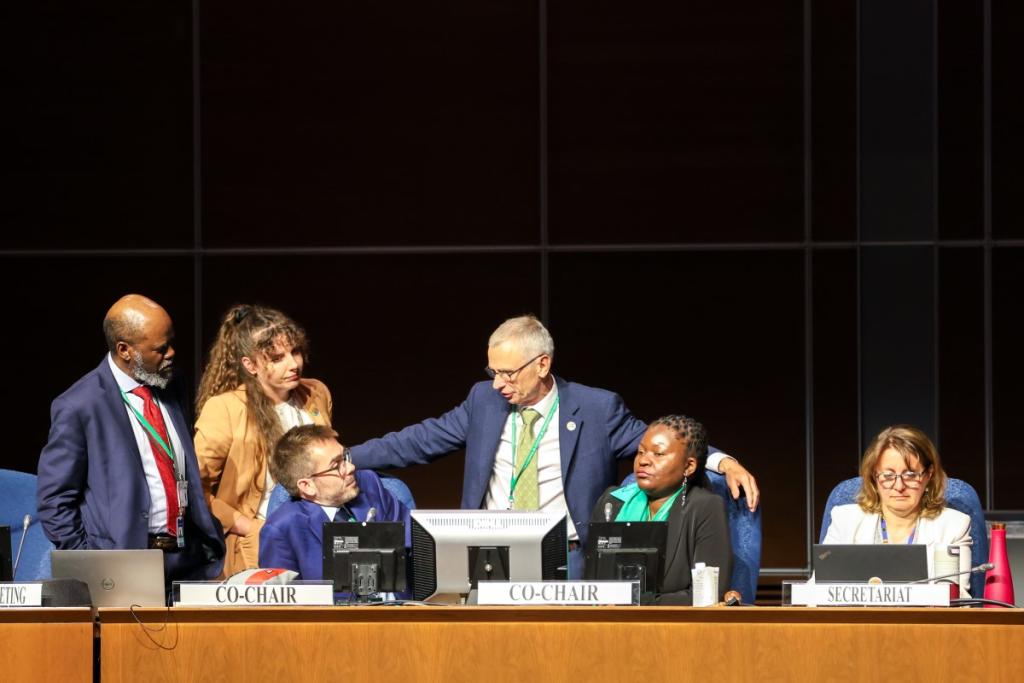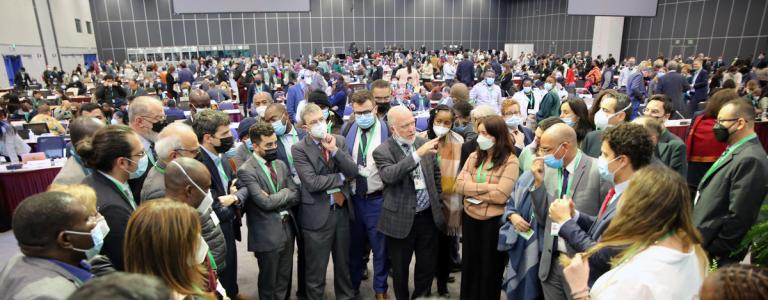COP 16 Will Hinge on Who Benefits from Nature’s DNA
Q and A with Dr. Elsa Tsioumani of Earth Negotiations Bulletin
Ahead of the UN Biodiversity Conference in Cali, IISD’s Earth Negotiations Bulletin Team Lead Dr. Elsa Tsioumani breaks down key issues driving the upcoming negotiations of the Convention on Biological Diversity. A pillar of the talks is benefit-sharing from digital sequence information (DSI) on genetic resources—in other words, determining who profits from the digitization of the world’s genetic diversity and how much is given back to its stewards. Gaps between negotiating parties are stark, but Tsioumani points out a spark of positive spirit in the lead-up.
What are the main items to follow during this meeting?
The CBD has a very broad agenda, but I would highlight three main areas to watch.
First, the multilateral benefit sharing mechanism from the use of digital sequence information (DSI) on genetic resources. Discussions will center on the foundations and mechanisms for contributions to the benefit-sharing fund, as well as the methodologies and criteria for allocating those funds.
Second, the review of implementation of the Kunming-Montreal Global Biodiversity Framework through national action, but also through resource mobilization and financial arrangements, as well as the global review of collective progress.
And third, the new work programme on Article 8j and related provisions of the Convention, which refer to Traditional Knowledge of Indigenous Peoples and local communities.

What exactly is DSI and how does it figure into these negotiations?
The genetic material of living organisms is used to develop products, including food, cosmetics, vaccines. To ensure that the innovation process is more fair and benefits us all, the Convention on Biological Diversity establishes a framework that requires acquiring consent from the countries that host these genetic resources and giving back to them a share of the benefits derived from their utilization.
But there is a gap.
Recently, technological developments have made it easier to share and analyze genetic data. We no longer need access to the physical component of the genetic resources for innovation purposes. We can simply rely on digital sequence information available in scientific databases.
This runs the risk of bypassing the current benefit-sharing requirements under the Convention and under different countries’ legislation.
At the last meeting of the Conference of the Parties in 2022 in Montreal, parties achieved a major breakthrough on access and benefit sharing as part of the Global Biodiversity Framework. They agreed to establish a multilateral benefit-sharing mechanism from the use of DSI, including a global fund. In Cali, parties are expected to operationalize—to put in effect—this multilateral benefit-sharing mechanism based on the negotiations of an intersessional working group.
Many issues still need to be worked out. These include the basis and modalities of contributions to this benefit-sharing fund, as well as the methodology and criteria for allocating the funding. Also, data governance is a big issue, with regard to the relationship of the multilateral mechanism with public databases. But it is important to highlight that at the last meeting of the working group in August in Montreal, there was broad support—though not consensus—toward a sector-based approach to benefit sharing from DSI. This means that all companies in sectors depending highly on use of digital sequence information—including agriculture, pharmaceuticals and cosmetics—would be required to contribute to this fund.
Has this breakthrough in the biodiversity talks influenced other negotiations in the past two years?
I would note that benefit sharing from DSI is under consideration in other relevant international fora, including the revision process of the International Treaty on Plant Genetic Resources for Food and Agriculture (ITPGRFA), as well as negotiations for a treaty on pandemics under the World Health Organization.
Of course, we cannot be certain to what degree decisions in one negotiation influence another, but we can assume some influence. For instance, the fact that the BBNJ agreement—the agreement on marine biodiversity beyond the limits of national jurisdiction—accepted the same principle [i.e. benefit-sharing from DSI use] in the text of its treaty. This was a major development.
What are the financial implications of the DSI benefit-sharing fund – both agreeing on who pays into the fund and who receives funding? Thousands of dollars? Millions of dollars?
It really depends on what percentage countries will agree upon. And the working group has not discussed this at all. Even the basis of payments is not agreed upon yet. It might be from some hundreds of thousands a year to maybe some billions a year.
Imagine: if we're talking about the annual turnovers of the entire pharmaceutical, agriculture and cosmetics sectors, then we are talking about billions and billions of dollars. But what percentage exactly from this income will go into the DSI fund is another question.
Realistically speaking, benefit-sharing from DSI use will not close the multibillion-dollar gap we need to fill for biodiversity governance as stated in the Global Biodiversity Framework. It will not cover it.
We need also other sources of funding.
How will COP16 try to support implementation of the Kunming-Montreal Global Biodiversity Framework?
In 2022, the Conference of the Parties adopted the Kunming-Montreal Global Biodiversity Framework, which seeks to reverse current rates of biodiversity loss by addressing both the direct and the indirect causes of biodiversity loss. To do this, it aims to guide global biodiversity policy through four overarching goals for 2050 and a set of 2030 targets.
It's important to mention that it's not legally binding, but it guides implementation by countries. It also integrates a human rights-based approach and the whole of society approach, aiming to integrate a broad set of actors into biodiversity governance.
Implementation of the Global Biodiversity Framework is supposed to be promoted through National Biodiversity Strategies and Action Plans (NBSAPs), which is the tool the Convention on Biological Diversity provides to help countries in biodiversity planning. So as part of their commitments under the Convention, governments must translate the goals and targets of the Global Biodiversity Framework into their own national targets and actions to support implementation.
In addition, other actors are invited to develop and communicate their own commitments. Governments, in particular, needed to submit to the CBD Secretariat the revised NBSAPs by COP 16.
Not all countries have done so to date. Approximately 60 to 70 countries have submitted at least one national target. About 50 have submitted targets for every target included in the Global Biodiversity Framework, and approximately 20 have submitted updated NBSAPs in line with the GBF. This is the first step for national implementation. These strategic documents should then be supported by legislative and policy frameworks to support better implementation and compliance. Timely submission of NBSAPs would also facilitate the global review of collective progress in GBF implementation for the first time under the CBD.
It will be interesting to see the degree of party participation at the pilot forum for voluntary country review, which will take place during the meeting of the Subsidiary Body on Implementation immediately prior to COP 16.
Resource mobilization and financial arrangements are also linked to GBF implementation. Historically, these deliberations have been extremely controversial, with developing countries urging developed countries to fulfill their financial commitments under the convention—Articles 20 and 21—to close the biodiversity finance gap. Under this issue area, COP 16 will focus on a new resource mobilization strategy, a global instrument on biodiversity finance, and the role of the Global Environment Facility vis a vis the Convention.

How effective have NBSAPs been to date?
It really depends on the context. There is some research out exploring exactly how NBSAPs are implemented at the national level. Some NBSAPs are being implemented successfully, others less so. But the Convention does not engage in a qualitative review of NBSAPs. There is no international mechanism to examine whether countries are sincere in their NBSAPs and how far they are going with their implementation. It's up to the individual governments to formulate and submit them. Their implementation depends on a holistic framework of regulations and policies, touching upon not only on biodiversity or even environmental policies, but also on productive sectors that traditionally destroy biodiversity.
What is on the agenda for COP16 when it comes to Indigenous Peoples and local communities and their Traditional Knowledge?
The COP will address a new work programme on Article 8j and related provisions on Traditional Knowledge, customary sustainable use, and other items related to Indigenous Peoples and local communities. Importantly, parties will discuss creation of a permanent subsidiary body on Traditional Knowledge to replace the current ad hoc working group.
Deliberations of this issue are expected to focus on controversial terminology following a recommendation by the UN Permanent Forum on Indigenous Issues to distinguish between Indigenous Peoples, on one hand, and local communities on the other—mainly due to the elevated status of Indigenous Peoples as right holders under international human rights law.
Separating these two terms will be a matter of controversy. Many parties do not acknowledge a difference between them in the context of biodiversity conservation and sustainable use under the Convention. Either they don't recognize Indigenous Peoples as such under their national laws or, as in the case of many African countries, they consider all local communities as Indigenous, so there is no need for differentiation.
Those supporting the differentiation between the two are afraid that grouping them together risks limiting the rights Indigenous Peoples have under international law.
It’s worth noting their importance for the Convention refers to their contribution to the conservation and sustainable use of biodiversity. The CBD does not, in some abstract term, talk about Indigenous Peoples and local communities, but only as far as conservation and sustainable use of biodiversity diversity is concerned.

Why is the Colombian Presidency is hosting this meeting under the theme "peace with nature"?
Their idea is to emphasize that the integration of biodiversity considerations across the production sectors and the economy is very much lacking, along with the political will to address vested interests and extractive activities that exploit both humans and nature.
It is also worth highlighting a series of agenda items on collaboration with other multilateral environmental agreements and between the Rio Conventions—CBD, UNFCCC, UNCCD—to explore opportunities for more synergetic, holistic action to achieve their goals.
You attended many of the intersessional meetings since CBD COP15 in Montreal. How would you characterize the moods and the progress at those talks?
We had very mixed signals during the intersessional work. During the meetings of the working group on DSI, the atmosphere was indeed very positive, surprisingly positive. It was not the same atmosphere at the subsidiary bodies—the SBSTTA, the SBI meetings. And this is reflected in the fact that most of the recommendations of the subsidiary bodies are filled with brackets. There are many, many issues that still need to be agreed upon.
The recommendation from the DSI working group is also fully bracketed. But somehow, yes, there was a palpable positive spirit at that meeting.

During our halfway point webinar at CBD COP15 in Montreal, you remarked that an unfair narrative exists around the CBD and the GBF as the only avenue to reverse biodiversity loss. How high should our expectations be for COP16? What kind of mindset should people bring with them to biodiversity negotiations?
We have to remember that CBD negotiations reflect country positions. At the end of the day, reversing biodiversity loss goes down to national level action—legislative and policy action by parties, by governments. The CBD can do much to guide global biodiversity policy and inspire through goals, but implementation rests with governments. This is very clear both in the Convention text and also in the talks.
So, what exactly governments will choose to do, we will see.
Participating experts
You might also be interested in
What Does Climate Adaptation Look Like in Action? Here are nine locally led, nature-based ideas
What does Nature-based solutions (NbS) for adaptation look like for the communities involved? From cultivating seaweed seeds to planting hurricane-resistant trees, here are nine locally-driven ideas.
Nations are exiting a secretive system that protects corporations
Bolivia was the first nation to begin leaving a legal system that allows foreign companies to sue governments behind closed doors. Now, other countries are following.
UK must cut ECT legacy to become green superpower
A novel agreement could tackle Energy Charter Treaty claims and boost post-Brexit EU ties, writes IISD's Lukas Schaugg.
IISD's Best of 2024: Articles
As 2024 draws to a close, we revisit our most read IISD articles of the year.

